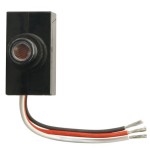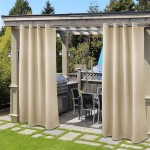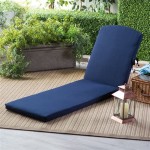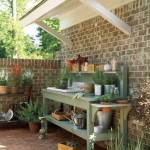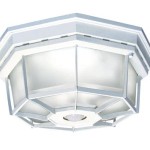Small Side Tables for Outdoors
Outdoor spaces, whether a sprawling patio or a compact balcony, benefit significantly from well-chosen furniture. Among the most versatile pieces are small side tables. These compact additions provide convenient surfaces for drinks, books, and other essentials, enhancing relaxation and enjoyment of the outdoors.
Various materials are used in the construction of outdoor side tables, each offering unique advantages and disadvantages. Metal, including aluminum, wrought iron, and steel, is a popular choice due to its durability and weather resistance. Aluminum is lightweight and rustproof, making it ideal for easy mobility. Wrought iron offers a classic aesthetic and substantial weight for stability, while steel provides exceptional strength, though it requires regular maintenance to prevent rust.
Wood is another prevalent material, offering a natural and inviting aesthetic. Teak, cedar, and acacia are common choices for their resistance to rot and insects. However, wood requires periodic sealing or staining to maintain its appearance and protect it from the elements. Regular cleaning is also necessary to prevent mildew.
Wicker, often crafted from rattan, polyethylene (PE), or high-density polyethylene (HDPE), presents a lightweight and stylish option. Natural rattan offers a traditional look but is less weather-resistant than synthetic alternatives. PE and HDPE wicker are durable and designed to withstand outdoor conditions, requiring minimal maintenance.
Other materials, such as plastic, resin, and concrete, are also utilized for outdoor side tables. Plastic provides an affordable and lightweight option, while resin offers durability and a variety of design possibilities. Concrete delivers a modern, industrial aesthetic and exceptional stability, though it can be heavy and susceptible to cracking in extreme temperatures.
When selecting a small outdoor side table, size is a key consideration. Measure the available space to ensure the table fits comfortably without obstructing movement. Consider the height of accompanying furniture, such as chairs or sofas, to ensure a comfortable and functional arrangement. A table that is too low or too high can be inconvenient.
Style is another important factor. Choose a table that complements the existing outdoor décor. Modern designs often incorporate clean lines and geometric shapes, while traditional styles may feature ornate details and curves. Rustic styles emphasize natural materials and textures, while coastal designs often incorporate light colors and airy silhouettes. The style of the side table should harmonize with the overall aesthetic of the outdoor space.
Functionality should also be considered. Some tables offer additional features, such as storage shelves or drawers, which can be helpful for storing small items like sunscreen, insect repellent, or books. Folding tables are convenient for small spaces, as they can be easily stored away when not in use. Tables with wheels offer increased mobility, allowing them to be moved around as needed.
Maintenance requirements vary depending on the material. Metal tables may require occasional cleaning and rust prevention treatments. Wood tables need regular sealing or staining, while wicker furniture benefits from periodic cleaning. Consider the level of maintenance required and choose a material that aligns with available time and resources.
Budget is another important factor. Prices for small outdoor side tables can range significantly depending on the material, size, and features. Set a budget before beginning the search to narrow down the options and avoid overspending. Consider the desired longevity of the table and invest in a quality piece that will provide years of enjoyment.
Placement of the side table is crucial for maximizing its functionality and aesthetic appeal. Position the table within easy reach of seating areas, allowing convenient access to drinks, books, and other items. Consider the flow of traffic and ensure the table does not obstruct movement. If the table is intended for use near a dining area, ensure it is positioned at a comfortable height for diners.
Accessorizing the side table can enhance its visual appeal and functionality. A small potted plant, a decorative tray, or a lantern can add a touch of personality and style. Consider the overall aesthetic of the outdoor space and choose accessories that complement the existing décor. Avoid cluttering the table with too many items, which can make it appear messy and disorganized.
Proper care and maintenance can extend the lifespan of an outdoor side table. Clean the table regularly according to the manufacturer's instructions. Protect the table from the elements by using a cover or storing it indoors during inclement weather. Address any damage promptly to prevent further deterioration. By following these simple steps, an outdoor side table can provide years of enjoyment and functionality.

Hana Outdoor Side Table Haven Way

Honey Joy Square Metal 18 5 Patio End Table Outdoor Side With Tempered Glass Tabletop Black Topb005160 The Home

Marius Stool Outdoor Side Table Garrison Street Design Studio Diy Patio Furniture Garden

Side Table All Small Space Patio Furniture Pottery Barn

Fufu Gaga 20 In Black Round Metal Outdoor Patio Bistro Side Tables Small Iron End Table For Garden Porch Lawn Backyard Yard Ylm Amkf170282 02 The Home

Kaden Multi Colored Glass And Black Metal Outdoor Side Table

Maypex Black Steel Outdoor End Table With Slat Top 300371 V2 The Home

Tangkula 1pc 2pcs 18 Adirondack Square Tea Table Side Outdoor Small Patio Weather Resistant Or Backyard Garden White

Colourful Outdoor Side Tables Style At Home

Wekity Side Table Outdoor Small Patio 18 Adirondack Weather Resistant Outside Square Tea For Backyard Poolside Garden Balcony Beside End Tables Grey Shein Usa

